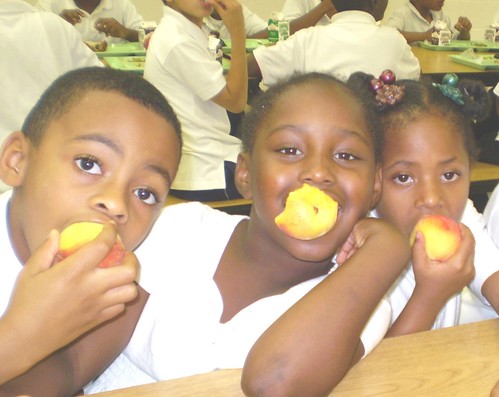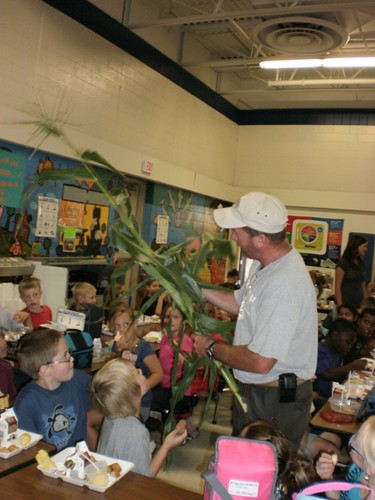
Feeding thousands children a healthy lunch every day isn’t easy. But as Farm to School programs become an important way to build local economies and connect youth with their food source, some school districts are getting creative about improving the healthfulness, and local-ness, of their cafeteria.
Chicago Public Schools (CPS), through its primary food provider, Chartwells-Thompson Hospitality, has the largest farm to school program in the Midwest, with more than $2.5 million in fruits and vegetables purchased from regional growers, and all going to its National School Lunch Program. Jean Saunders, marketing director for Chartwells-Thompson, tells me this is becoming more popular.
“There’s a trend going on in the industry to procure more from local sources. Our goal is to purchase local whenever we can.”
Which seems to be pretty often! CPS was recently in the news for its purchase of chicken raised without the use of antibiotics from an Amish farm in Indiana. And in October CPS featured a menu of locally-sourced items: fish tacos using real fish whiting filets from sustainable sources on a whole grain tortilla made by minority-owned firm Baja Foods; fresh cabbage from Kankakee, IL; and Michigan apples.
Saunders says part of the reason CPS started looking at local foods was to encourage more students to eat fruits and vegetables.
“It was phenomenal. When we first served local peaches, students were really excited,” says Saunders. “Some students said, ‘Gosh, I didn’t know peaches had furry skin on them.’”
Of course, you don’t have to be a large urban school district to be able to feature local foods on cafeteria menus, as Food Service Director Dan Gorman showed me. Gorman oversees the daily meals for 2,500 students in western Michigan’s Montague and Whitehall public school districts, where he’s spending a good portion of his budget on local apples and asparagus.

Through distributor MI Foods, Gorman has even been able to serve his students milk from a dairy farm just eight miles away. He also transitioned from white bread to whole grains, and students now eat hot dogs and hamburgers on whole grain buns from a local bakery.
“It’s a better product,” Gorman unequivocally states when I ask him why he made an effort to start purchasing local two years ago. “It’s healthier for the kids, and it’s good for the economy.”
Gorman makes a good point. USDA recognizes that by better connecting consumers with local and regional producers, we can strengthen local economies. Farm to school programs support family and small farmers, too. A recent USDA report tells us the demand for local food is growing, and we can see this in the increasing number of farm to school programs across the country.
An important component of Farm to School is education. Coordinator of Food and Nutrition Services Wendy Knight manages the food service for the nearly 28,000 students of the Rosemount-Apple Valley-Eagan school district in Minnesota. She’s been bringing local foods into her school lunches for about seven years now, because she knows how important it is that kids understand where their food comes from.
“I told the kids we were bringing in grass-fed beef hot dogs from a nearby producer,” recalls Knight. “And a little boy drew me a picture of a hot dog eating grass. That tells you something.”
Which is why Knight hopes to expand a program she started to bring local farmers into schools.
“The first farmer joined us for lunch and brought a cornstalk. The kids just loved it! They wanted to know all about how a seed became that giant stalk.”
